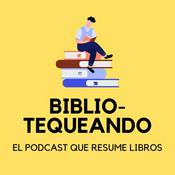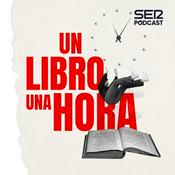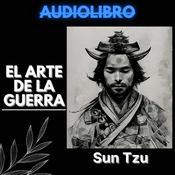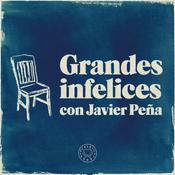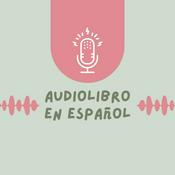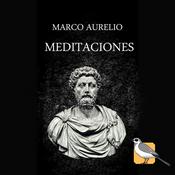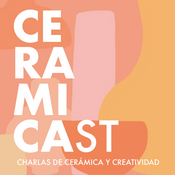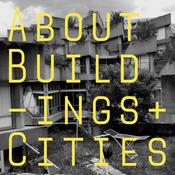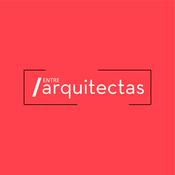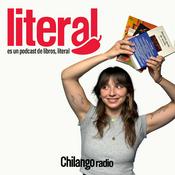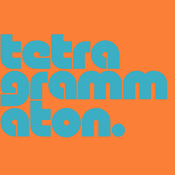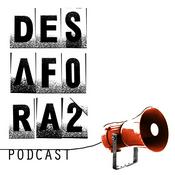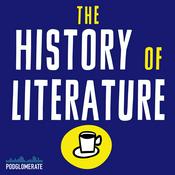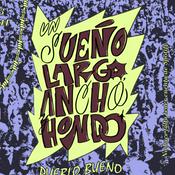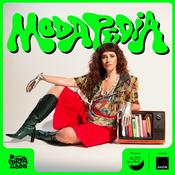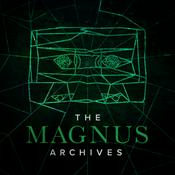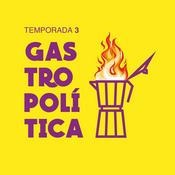8 episodios

Embodied Memory
04/8/2025 | 1 h 24 min
This episode explores bodies of water as sites for the coalescence of time and place, where mythology, cultural and ecological narratives, citizenship, belonging, and familial legacies, can be traced and archived.Zahra Malkani reads her text and plays accompanying field recordings that thread together other segments throughout the episode. Dilip da Cuhna talks about The Invention of Rivers in a lecture from 2019 at Harvard GSD. Architect Ola Hassanain and curator Michelle Mlati listen and respond to an oral excerpt of a performance by Ola at The Rijksakademie in The Netherlands last year as part of her project Tell the waters what the clay kept secret. In this performance, she recites a prayer towards water as a reparative act to the ecological emptying witnessed in Gezira, Sudan. Ola and Michelle discuss the role of the “Watcher” that has been entangled with Sufism and other ways of watching liminal waters. Arjuna Neuman presents part of the radio show For Lula, Mississippi, unearthing the ecological unconsciousness, from early blues to Choctaw music and culture, to contemporary pop. He connects Charlie Patton’s High Water Everywhere that describes the great flood of the Mississippi to Beyonce’s Formation. Priyageetha Dia presents the soundscape of her animation work, The Sea is A Blue Memory, and architect and researcher Marina Otero Verzier reads an essay she wrote about her research on Aguas curativas (healing waters) in Northwestern Spain. Lastly, we pay tribute to the late Bill Viola with The Reflecting Pool, 1977–1979.SOUND AND VIDEO CREDITSHarvard GSD (2019)Daniel Urban Kiley Lecture: Dilip Da Cunha, “The Invention of Rivers” [Film, excerpt]Dia, Priyageetha (2022) The Sea is a Blue Memory [Audio Files]Viola, Bill (1977-1979) The Reflecting Pool[Film]

Fugitive Terrain
04/8/2025 | 1 h 26 min
This episode traces the swamp as a site where something can both belong and not belong, as a space of possibility and impossibility, where multiple ideas, forms, and ways of life can exist in harmony and disharmony all at once.Participants in this episode include: Natasha Ginwala and Vivian Ziherl reading passages of their essay that will thread together the other segments throughout the episode. Environmental scientist Gonzalo Carrasco and architect Feifei Zhou discuss their project “Before There Was Land, There Were Mangroves”, commissioned for the 2024 Diriyah Contemporary Art Biennale. The project involves a series of mapping analyses examining Singapore’s history of land reclamation and the chemical impacts of recent industrial and urban transformations along the Southern coastline. Anthropologist Marcus Barber talks to Waka Mununggurr, the chairperson of the Djalkiripuyngu Aboriginal Corporation, about Indigenous relationships to land and sea. Tejah Shah reads five poems that were written by Minal Hajratwala, commissioned for Shah’s project Between the Waves. Chris Cyrille-Isaac tells a story he wrote called The Crab and the Aparahiwa in French for his exhibition “But the world is a mangrovity.” An English translation of The Crab and the Aparahiwa can be read here. Collaged in between are audio clips from soundscapes, interviews and films by Nicole L’Huillier, Thao Nguyen Phan and Barbara London, Sónia Vaz Borges and Filipa César, and Magnetic Ideals.SOUND AND VIDEO CREDITSMary Sabbatino and Gallerie Lelong, “Ana Mendieta at Gallerie Lelong,” Video, 2013.Jota Mombaça in collaboration with Anti Ribeiro, Darwin Marinho, and Luana Peixe, “until the last morning,” Video, 2023.Fred Moten and Boston Ujima Project, “Poetic Narratives of Black Fugitivity,” Video, 2024.Dala Nasser and Mhamad Safa, Red in Tooth, 2021. Video, 19 min.Seba Calfuqueo, “Ko ta mapungey ka (Agua también es territorio),” Video, 2020. Seba Calfuqueo, Stephanie Comilang, Dr. Senam Okudzeto, and Art Basel, “Conversations | Activating environments: New ways of thinking of land, sea, and life,” Video, 2024. abdo Fg. “جزء من خطاب الزعيم الليبي معمر القذافي في افتتاح النهر الصناعي العظيم.” Video, 2021.abdo Fg. “زوري النهر اوصل يامروة – حفلة افتتاح النهر الصناعي العظيم.” Video, 2019. abdo Fg. “زوري النهر اوصل يامروة.” Video, 2019.abdo Fg. “سلم علي من يسلم علينا – اوبريت النهر الصناعي العظيم.” Video, 2021. Nathaniel Mackey and The Creaking Breeze Ensemble, Fugitive Equation, Fonograph, “Skeletal Water, X-Ray Water (Part 1).” Audio, 2021.

Aural Fragmentation
04/8/2025 | 48 min
Aural Fragmentation is the fourth and final installment of season two of Storefront: Broadcasts. This special episode is produced and sound-designed by Mexican artist, researcher, and community organizer Jerónimo Reyes-Retana. He expands upon the ideas explored in our previous episode, Fugitive Terrain, such as the tension of water bodies as contested sites of catastrophe, conflict, and violence, but also as frontiers of freedom and retreat.Aural Fragmentation compiles a selection of ideas, provocations, and speculations stemming from a unique encounter at the easternmost edge of the Mexico-US borderlands. In this hidden corner of Tamaulipas, an oyster field vital to the local economy of the marginalized community of El Campo Pesquero de Playa Bagdad is now in alarming proximity to the SpaceX launch port at Boca Chica, Texas. In this context, confluence extends beyond the meeting of the waters of the Rio Grande and the Gulf of Mexico, creating a threshold not only between Mexico and the US but also between the so-called Third World and the First, inviting reflection on the emergence of new frontiers in outer space.AUDIO CREDITSSound design, mixing, and editing by Jerónimo Reyes-Retana.Text written by Jerónimo Reyes-Retana, read by Ceci Bastida.Testimonies by Reyna San Juan Gabino.Field recordings by Jerónimo Reyes-Retana.Archive material collected from SpaceX’s YouTube channel.“El Cascabel,” composed by Lorenzo Barcelata, performed by Arcadio Hidalgo and Grupo Mono Blanco.

Fluid Coexistence
04/8/2025 | 1 h 26 min
This episode traces the swamp as a site where something can both belong and not belong, as a space of possibility and impossibility, where multiple ideas, forms, and ways of life can exist in harmony and disharmony all at once.Participants in this episode include: Natasha Ginwala and Vivian Ziherl reading passages of their essay that will thread together the other segments throughout the episode. Environmental scientist Gonzalo Carrasco and architect Feifei Zhou discuss their project “Before There Was Land, There Were Mangroves”, commissioned for the 2024 Diriyah Contemporary Art Biennale. The project involves a series of mapping analyses examining Singapore’s history of land reclamation and the chemical impacts of recent industrial and urban transformations along the Southern coastline. Anthropologist Marcus Barber talks to Waka Mununggurr, the chairperson of the Djalkiripuyngu Aboriginal Corporation, about Indigenous relationships to land and sea. Tejah Shah reads five poems that were written by Minal Hajratwala, commissioned for Shah’s project Between the Waves. Chris Cyrille-Isaac tells a story he wrote called The Crab and the Aparahiwa in French for his exhibition “But the world is a mangrovity.” An English translation of The Crab and the Aparahiwa can be read here. Collaged in between are audio clips from soundscapes, interviews and films by Nicole L’Huillier, Thao Nguyen Phan and Barbara London, Sónia Vaz Borges and Filipa César, and Magnetic Ideals.SOUND & VIDEO CREDITSL’Huillier, Nicole (2018). Amphibian Songs [Audio Files]Amphibian Songs was originally composed for Futurity Island, a project by Nomeda and Gediminas Urbonas, designed in collaboration with Indrė Umbrasaitė, that is an infrastructure for interspecies communication and an open space for learning. Borges, Sónia Vaz & César Filipa (Directors). (2022) Mangrove School [Film, excerpt]LOOP Barcelona (2020) Becoming Alluvium Thao Nguyen Phan in conversation with Barbara London [Film, excerpt]Shah, Tejal (2012) Between the Waves [Audio Files]Lumm, Kirsty and McKnight, Heather (2023) The Swamp: Ritualising our Biodiversity as a Utopian Somatic Practice [Film]

Analogue
18/12/2024 | 2 h 27 min
This episode focuses on our online obsessions, the digital realm, and how technology and commerce have changed the urban landscape and public life. It is a part of our 2023–2024 research theme: On the Ground.Poet and artist Benjamin Krusling layers and collages audio textures to explore structures of dispossession and the constitution of public space. Architect Jesse LeCavalier reads NYC Local Law 166, a local law established in 2021 in relation to micro-distribution centers for distributing goods from ecommerce platforms otherwise known as microhubs. Artist Danielle Dean talks about post-Fordism, Amazon Mechanical Turk workers, and specifically how capitalistic structures are maintained through specific forms of labor organization and data collection. Artists Basel Abbas and Ruanne Abou-Rahme’s 4-channel video and live performance titled At Those Terrifying Frontiers Where the Existence and Disappearance of People Fade into Each Other. Writer and technologist Sophia Tareen brings together Claudia Irizarry Aponte, senior reporter covering labor and work issues for THE CITY and AI researcher Ria Kalluri to discuss contemporary labor movements and digital technology. Architect and curator Ippolito Pestellini Laparelli reads an excerpt from his research project Riders not Heroes, introducing us and setting the foundation for his video essay of the same name which we listen to next, that investigates the precarious conditions of food delivery riders in Milan. Artist David L. Johnson meets sociologist Sharon Zukin about their shared ongoing interest in the transformation of New York City and the increasing privatization of civic infrastructure. Artist Cao Fei’s documentary 11:11, recorded the work overload of the entire JD.com logistics sectors before and after the Double Eleven Shopping Day in China which is the equivalent of the Black Friday, sketches out the landscape of consumption driven by the powerful Internet economy and asks how this situation will lead us into a future social ecosystem. Curator and researcher Camila Palomino reads from her recent essay on artist Emily Jacir and unpacks her 2000 work, My America (I am still here).This episode was originally published through Montez Press Radio.SOUND CREDITS:2050+ & -orama (Directors). (2021). Riders Not Heroes: Anatomy of a DeliveryFei, Cao (Director). (2018).Mauriès-Rinfret, Emmanuel (Director). (2022) Retail Apocalypse: The Epilogue | SSENSE x CCAJulmud (2023). Tuqoos | ط ُ ق ُ و س
Más podcasts de Arte
Podcasts a la moda de Arte
Acerca de Storefront Broadcasts
Escucha Storefront Broadcasts, Cháchara Literaria y muchos más podcasts de todo el mundo con la aplicación de radio.net
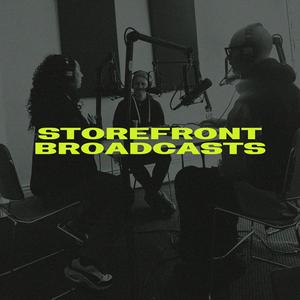
Descarga la app gratuita: radio.net
- Añadir radios y podcasts a favoritos
- Transmisión por Wi-Fi y Bluetooth
- Carplay & Android Auto compatible
- Muchas otras funciones de la app
Descarga la app gratuita: radio.net
- Añadir radios y podcasts a favoritos
- Transmisión por Wi-Fi y Bluetooth
- Carplay & Android Auto compatible
- Muchas otras funciones de la app


Storefront Broadcasts
Descarga la app,
Escucha.

